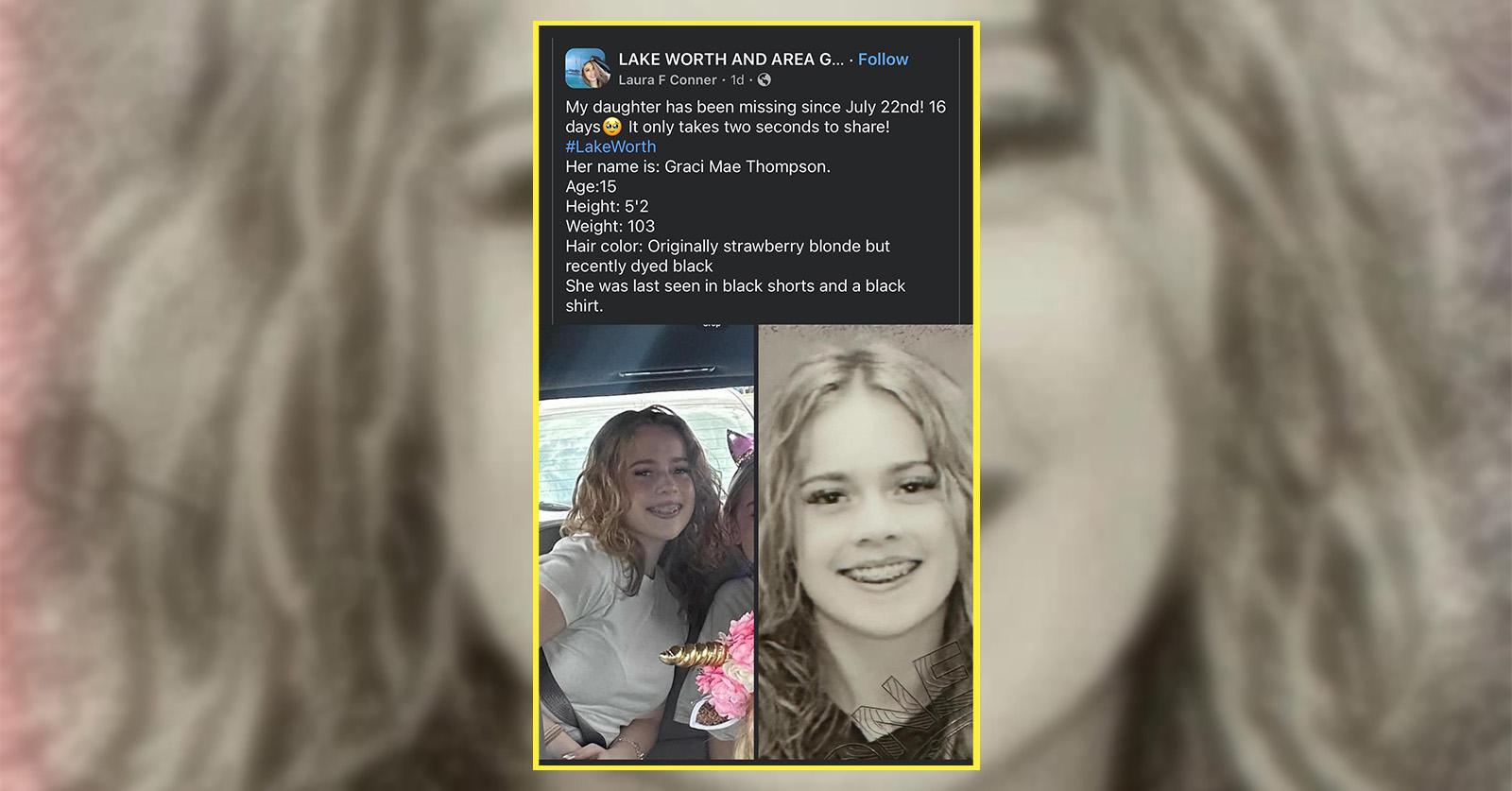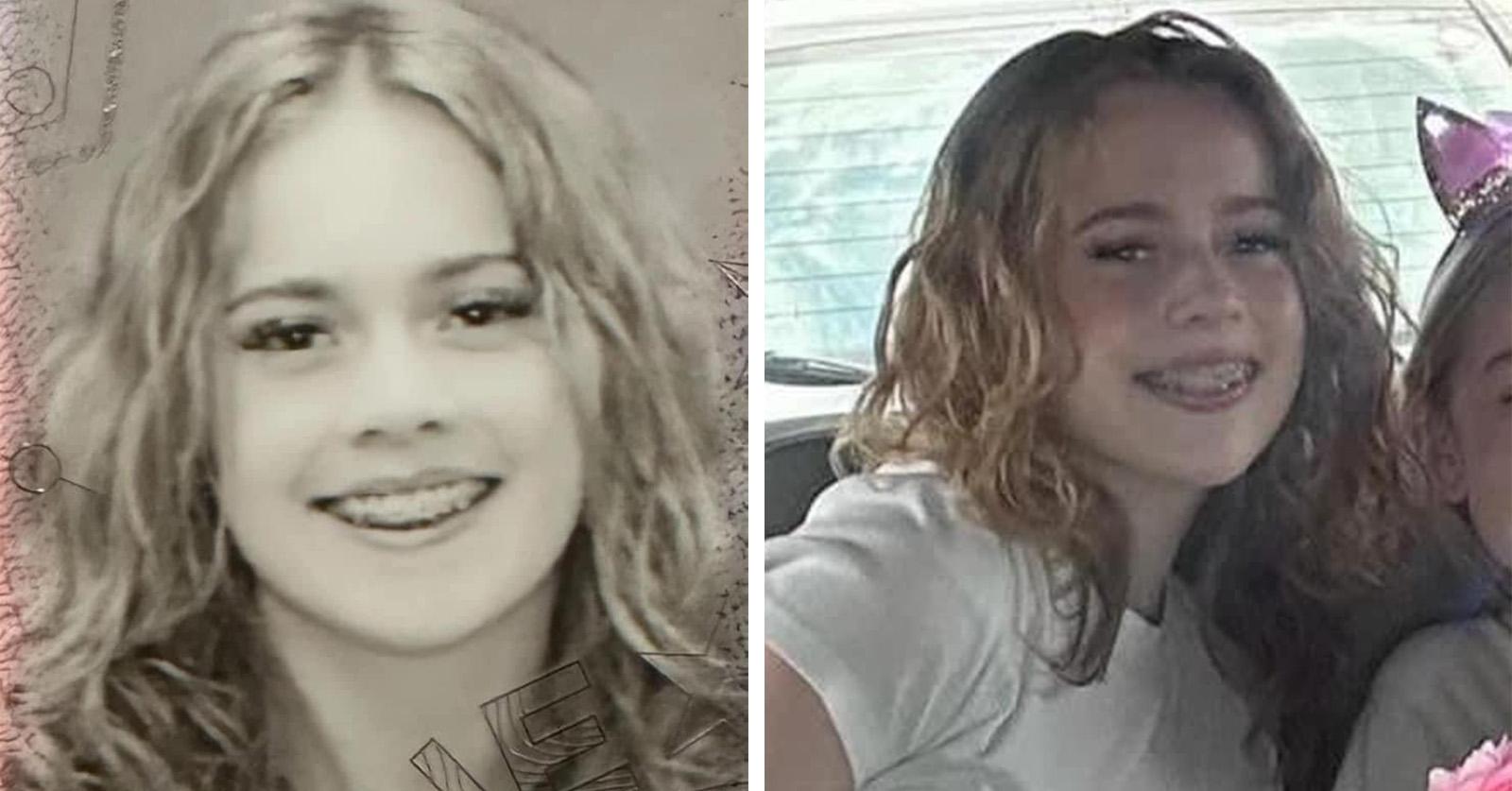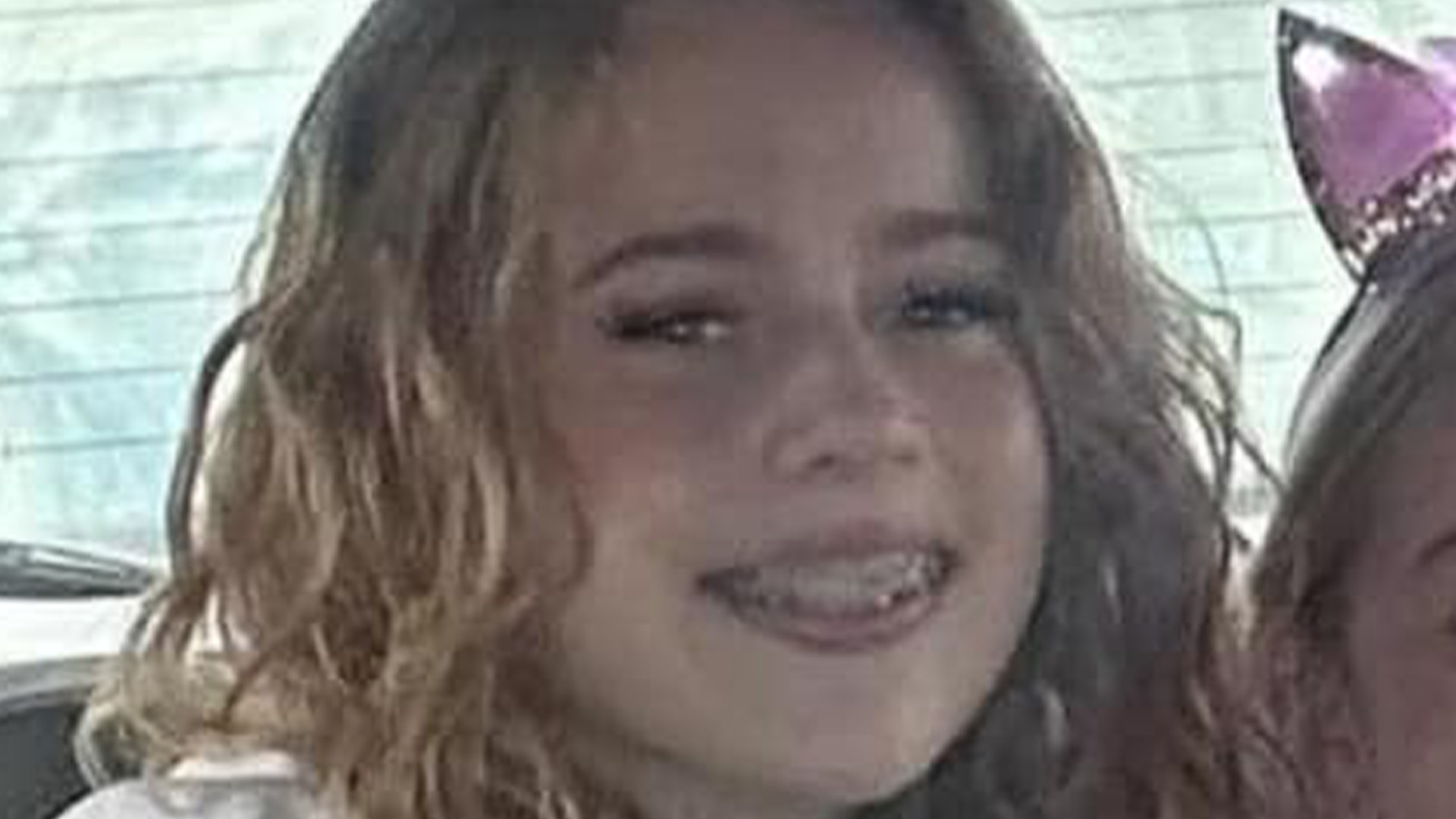Is the image of a smiling girl on your social media feed a genuine plea for help, or is it something far more sinister? The recent wave of posts concerning a purported missing girl named Gracie Mae Thompson is, unfortunately, a calculated deception designed to exploit your empathy and amplify its reach through shares and likes.
Earlier this month, the digital landscape, particularly platforms like Facebook, became awash with posts alleging the disappearance of a young girl named Gracie Mae Thompson. These posts, often accompanied by a photo of a smiling child, painted a picture of a missing person case, supposedly with the disappearance occurring on July 22nd. The story, however, began to unravel under closer scrutiny. The posts were crafted to trigger an emotional response, preying on the public's innate desire to help and to share information that might assist in a missing person's case. This is a tactic that's not only misleading but also actively harmful, as it can divert resources and attention from legitimate missing person reports, while also potentially causing undue stress and anxiety for the families of missing persons and the communities they live in. The fact that this information is currently circulating underscores the importance of verifying information before engaging with such content, and of reporting these kinds of posts when you come across them.
| Subject | Gracie Mae Thompson (Alleged) |
| Alleged Disappearance Date | July 22, 2024 |
| Reported Locations (Varied) | Tomball, Texas; Odessa, Texas; Baltimore (Claims Vary) |
| Nature of Information | Fake Missing Person Report - "Missing Girl Scam" |
| Purpose of Posts | Generate Shares and Likes, Exploit Empathy |
| Official Amber Alerts/Reports | None Found |
| Warning | The National Center for Missing & Exploited Children has warned social media users of the horrific attempts from scammers to hack accounts with fake missing children posters. |
| Reference | National Center for Missing & Exploited Children |
The stories surrounding Gracie Mae Thompsons supposed disappearance, which began to proliferate in early August 2024, share a disturbing similarity, employing the same tactics to gain traction. They usually feature a photograph of a young girl, often smiling, and a narrative crafted to elicit immediate concern. A post on August 8, 2024, serves as a template for this deceptive method. The posts typically claim that the girl went missing in late July, with variations appearing for locations such as Tomball, Texas, and Odessa, Texas. The ultimate goal of these posts is not to find a missing child; rather, it is to use the image and narrative to generate engagement, often with the intent to mislead or defraud. The posts appear to be designed to exploit the desire of social media users to share and help, while not providing them with any legitimate means of helping to locate a missing person.
The presence of these posts underscores the importance of critically evaluating the content we encounter online, particularly on social media. While the impulse to share information that may assist in a missing person's case is natural, it is critical to verify the source and the authenticity of the information. A genuine missing person report would typically be backed by official sources, such as law enforcement agencies and credible news organizations. It would appear on official missing persons databases, and would be accompanied by official alerts, such as Amber Alerts, when applicable. The absence of these corroborating factors is a red flag, indicating a high likelihood of the post being fraudulent.
The scam, often referred to as the "missing girl scam," capitalizes on the publics empathy. The smiling photo, the tragic narrative these are all carefully crafted to bypass critical thinking and to prompt immediate action: sharing the post. But, the truth is, that the photograph and accompanying text are being used to manipulate the public and to generate shares and likes for some unknown gain. The details, even the location, vary, which proves that the scammers are not actually looking to find a missing person. The posts have previously claimed that the disappearance occurred in different cities, further highlighting the deceitful nature of the information.
The situation also serves as a stark reminder of the potential dangers of sharing unverified information. As Angeline Hartmann of the National Center for Missing & Exploited Children has warned, sharing scam photos can undermine real missing person cases, diverting valuable resources and confusing the public. This is why it is critical to ensure that any information shared is authentic and from a trustworthy source. Furthermore, it is vital to report these types of posts when they are encountered on social media platforms, allowing the platform to take action against the deceptive information.
- National Send Nudes Day Dates Origins Internet History
- Jayson Tatum Nationality Ethnicity More Unveiled
It is important to remember that legitimate missing person cases are reported by news sites and by police agencies. They often involve official alerts and, most importantly, confirmed details. The presence of a photograph, a vague narrative, and an urgent plea for shares do not constitute a legitimate missing person report. It is vital to be cautious in sharing information online and to always verify its authenticity before engaging with it. When in doubt, it's always best to err on the side of caution and to report suspicious posts.
Furthermore, there is no record of Gracie Mae Thompson in national missing person databases. This absence, together with the fact that news outlets have not reported her disappearance, points toward the conclusion that Gracie Mae Thompson is not a real missing person. The fact that the posts are designed to tug at the heartstrings and to garner widespread shares is another indication of the malicious intent behind them. The posts also include links to real estate listings or other advertisements, which further indicates their intent to be fraudulent.
The use of the image of a young girl is a key component of this scheme, exploiting the public's natural sympathy and concern for children. The photograph is designed to create an emotional response and to bypass critical thinking, prompting users to share the post without questioning its authenticity. The scam attempts to create a sense of urgency by claiming that the girl is missing, playing on the public's inherent desire to help and to assist in the search for a missing child. The details about Gracie Mae Thompsons alleged disappearance change from post to post. The fact that the details about her supposed disappearance are inconsistent is a key indicator that this is a hoax.
It is also crucial to recognize the devastating consequences of such scams. Not only do they undermine the efforts to find genuine missing children, but they also cause emotional distress and anxiety. They divert attention and resources from actual cases, potentially hindering investigations and delaying the return of missing individuals. By spreading misinformation and creating a climate of mistrust, these scams erode public trust in legitimate efforts to find missing persons. Its not a matter of "if" this will happen, but when. The national center for missing & exploited children (NCMEC) has warned social media users of the horrific attempts from scammers to hack accounts with fake missing children posters. The people behind these scams understand the power of social media and the power of the emotions that it can generate.
The situation involving Gracie Mae Thompson is not isolated. In the past, similar scams have emerged, featuring different names and photographs, but using the same tactics. For example, the case of Cassie Thompson, a girl who has been missing since 2014, has been falsely linked to this scam. Also, another girl named Haley Grace was mistaken for the girl in a viral video with black eyes. These examples show the importance of being diligent about verifying online information.
In conclusion, the posts about Gracie Mae Thompson are not a legitimate missing person report but a malicious attempt to exploit the publics emotions. Always be vigilant when encountering content on social media, and always verify the information from reputable sources before sharing it.



Detail Author:
- Name : Mckenzie Harris
- Username : stanton.keyshawn
- Email : savannah.schowalter@reichel.biz
- Birthdate : 2001-12-28
- Address : 55069 Kasey Cove Apt. 518 Port Milanfurt, RI 90693-5828
- Phone : 878-768-9849
- Company : Grimes-Pfeffer
- Job : Upholsterer
- Bio : Dolor nesciunt saepe rerum labore labore eum repellendus. Et quas architecto provident temporibus earum non. Autem exercitationem eos modi fugiat quasi non dolor alias.
Socials
instagram:
- url : https://instagram.com/mossie_real
- username : mossie_real
- bio : Sequi eaque sed fugiat sed et. Nihil qui aut est voluptatem tempore placeat commodi.
- followers : 3930
- following : 167
tiktok:
- url : https://tiktok.com/@mossie_official
- username : mossie_official
- bio : Quaerat reprehenderit fugit et voluptatem et voluptatem eaque earum.
- followers : 6068
- following : 2261
twitter:
- url : https://twitter.com/mkutch
- username : mkutch
- bio : Minima est consequatur quis sit consequatur. Ad labore vero ullam dolorem et.
- followers : 930
- following : 800
linkedin:
- url : https://linkedin.com/in/mossie5887
- username : mossie5887
- bio : Aut in autem veritatis magni.
- followers : 3919
- following : 1148
facebook:
- url : https://facebook.com/mossie_kutch
- username : mossie_kutch
- bio : Ullam explicabo fugiat consequatur dolores.
- followers : 6514
- following : 1704